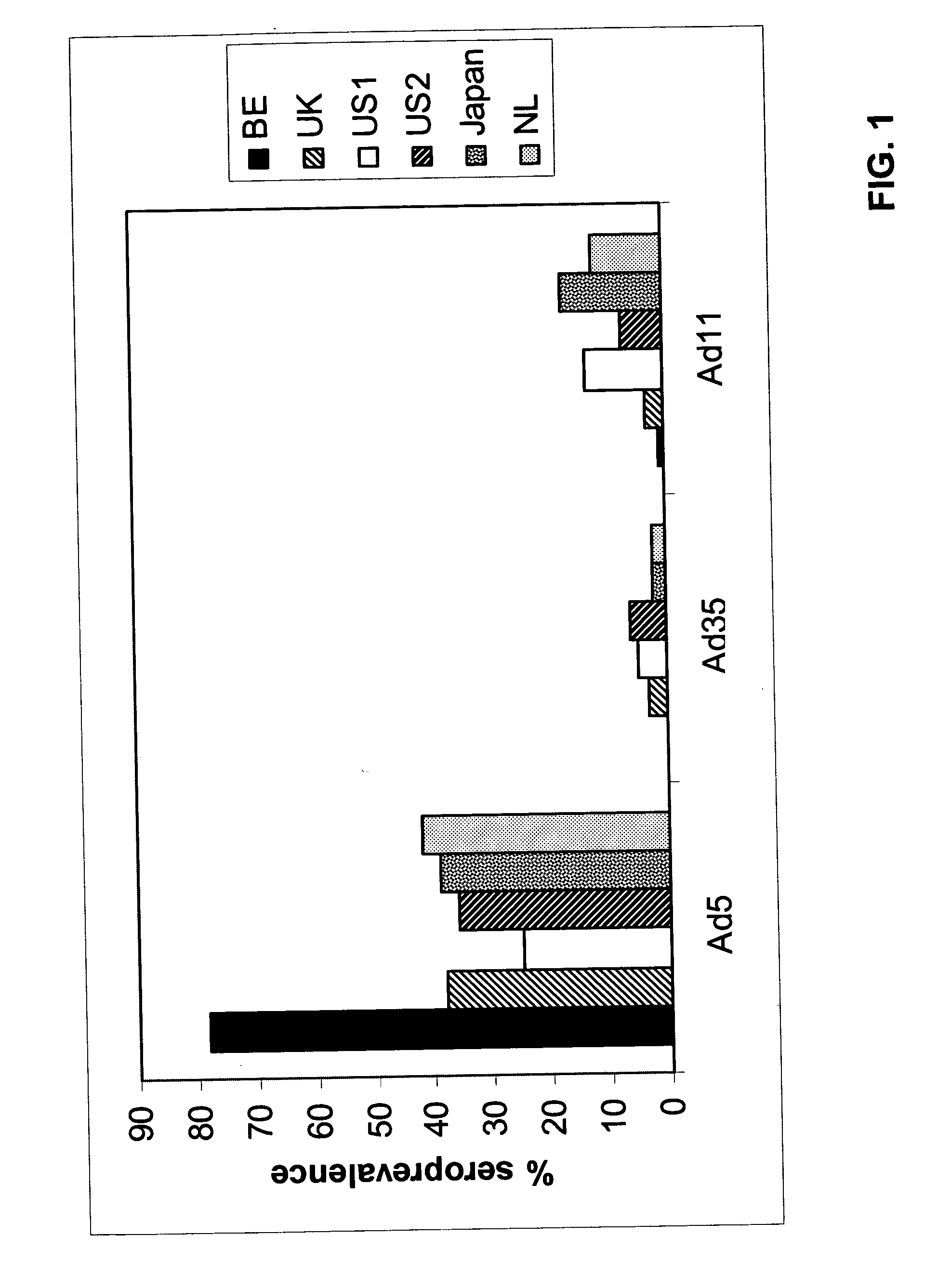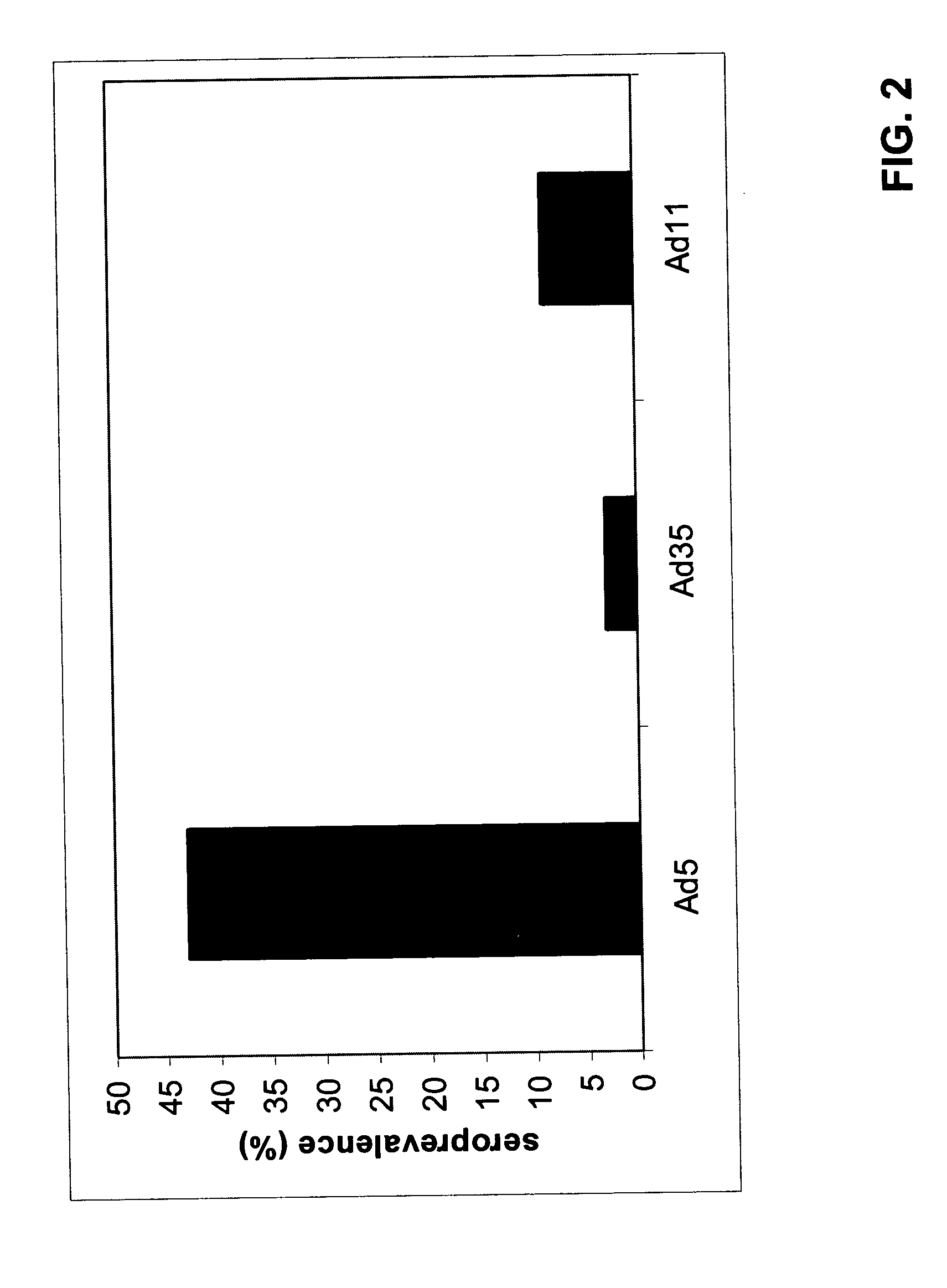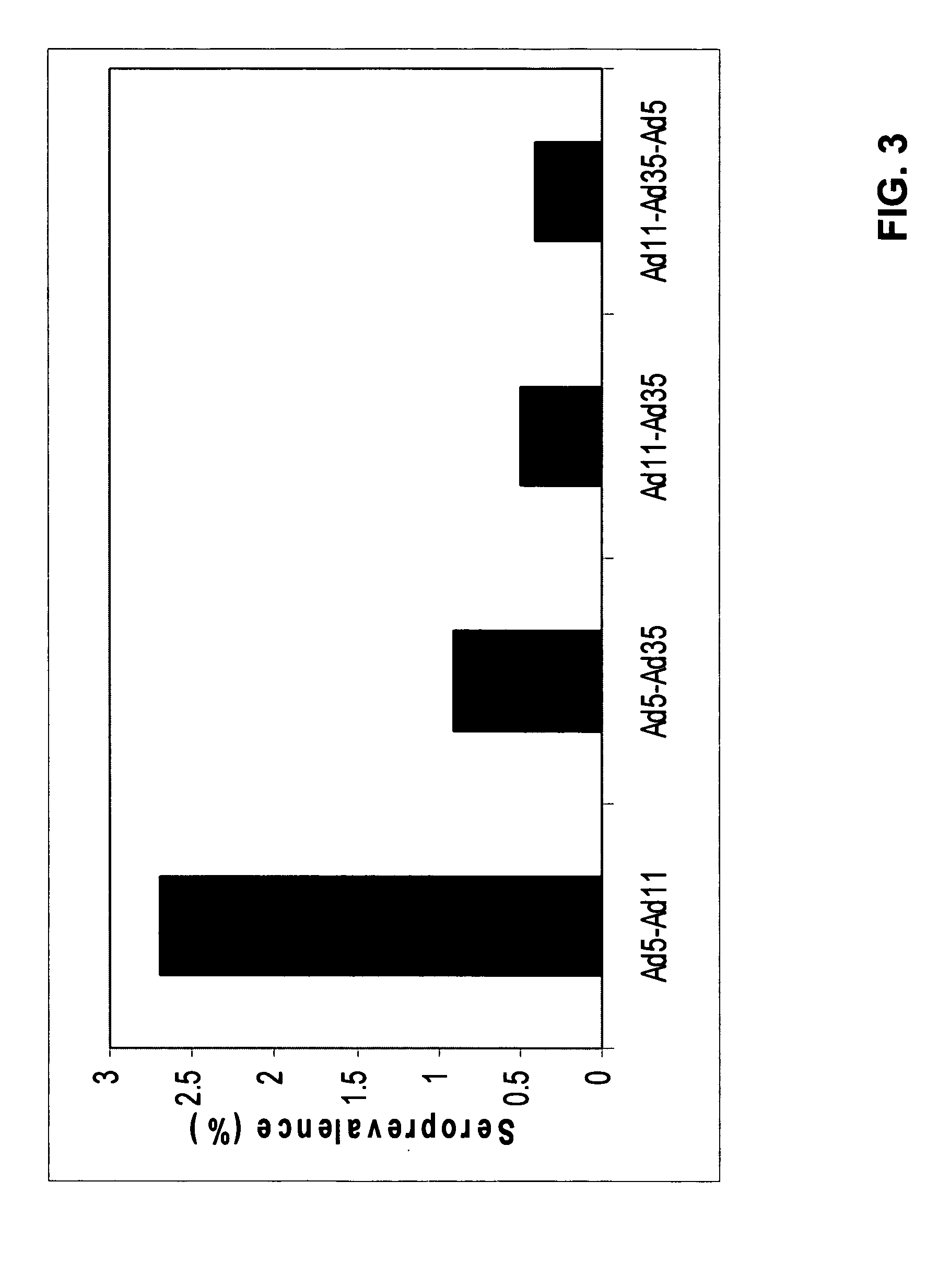Settings for recombinant adenoviral-based vaccines
a technology of adenovirus and adenovirus, applied in the field of biotechnology, can solve the problems of low immune response and inability to achieve the protective effect of vaccines
- Summary
- Abstract
- Description
- Claims
- Application Information
AI Technical Summary
Benefits of technology
Problems solved by technology
Method used
Image
Examples
example 1
Low Prevalence of Neutralizing Activity to Ad11 and Ad35
[0061] The analysis of neutralizing activities to Adenovirus (Ad) serotypes in human sera from different geographic locations (Belgium, United Kingdom, The Netherlands and two locations in the United States of America) has been described elsewhere (U.S. Pat. No. 6,492,169). One of the conclusions from these studies was that neutralizing activities against certain adenovirus serotypes, especially Ad35 and Ad11, were significantly lower than those directed against Ad5.
[0062] For further analysis using serum from a location in the Far East, 100 serum samples were obtained from Japan. Neutralizing activities were determined by the neutralization assay described in Example 1 of U.S. Pat. No. 6,492,169. A serum was set as “non-neutralizing” when, in the well with the highest serum concentration, the protection of cyto-pathological effect (CPE) was 90% compared to the controls without serum. FIG. 1 illustrates the sero-prevalence (%...
example 2
Generation of Recombinant Adenoviral Vaccine Vectors Based on Ad5
[0064] RCA-free recombinant adenoviruses can be generated very efficiently using adapter plasmids, such as pAdApt, and adenovirus plasmid backbones, such as pWE / Ad.AflII-rITRsp. Methods and tools have been described extensively elsewhere (U.S. Pat. Nos. 5,994,128 and 6,670,188, and International Patent Applications WO 99 / 55132, WO 99 / 64582, WO 00 / 70071, WO 00 / 03029, which references are incorporated in their entirety herein). Generally, the adapter plasmid containing the transgene of interest in the desired expression cassette is digested with suitable enzymes to free the recombinant Ad sequences from the plasmid vector backbone. Similarly, the adenoviral complementation plasmid pWE / Ad.AflII-rITRsp is digested with suitable enzymes to free the adenovirus sequences from the vector plasmid DNA.
Cloning of the Gene Encoding Hemagglutinin from Measles Virus into pIPspAdapt1
[0065] The plasmid containing the gene encoding...
example 3
Generation of Recombinant Adenoviral Vaccine Vectors Based on Ad35
[0069] RCA-free recombinant adenoviruses based on Ad35 are generated very efficiently using adapter plasmids, such as pAdApt35Ip1 (containing Ad35 nucleotides 1-464 and 3401-4669; WO 00 / 70071) and pAdApt535 (see below), and adenovirus plasmid backbones, such as pWE / Ad35.pIX-rITRΔE3 (U.S. Pat. No. 6,492,169).
Cloning of the Measles Virus Hemagglutinin into pAdapt35IP1
[0070] The plasmid containing the gene encoding for the measles virus hemagglutinin (MV-H) protein pEC12 / Neo / HA was digested with HindIII and BamHI. The 1.6 kb fragment corresponding to the MV-H gene was isolated from agarose gel and ligated to HindIII and BamHI-digested pAdapt35IP1 vector (WO 00 / 70071). The resulting plasmid was named pAdapt35.MV-H and contains the MV-H gene under the transcriptional control of the full-length human CMV promoter and SV40 polyA(+) signal. A schematic representation of pAdapt35.MV-H is shown in FIG. 6.
Generation of Rec...
PUM
| Property | Measurement | Unit |
|---|---|---|
| volume | aaaaa | aaaaa |
| volume | aaaaa | aaaaa |
| volumes | aaaaa | aaaaa |
Abstract
Description
Claims
Application Information
 Login to View More
Login to View More - R&D
- Intellectual Property
- Life Sciences
- Materials
- Tech Scout
- Unparalleled Data Quality
- Higher Quality Content
- 60% Fewer Hallucinations
Browse by: Latest US Patents, China's latest patents, Technical Efficacy Thesaurus, Application Domain, Technology Topic, Popular Technical Reports.
© 2025 PatSnap. All rights reserved.Legal|Privacy policy|Modern Slavery Act Transparency Statement|Sitemap|About US| Contact US: help@patsnap.com



